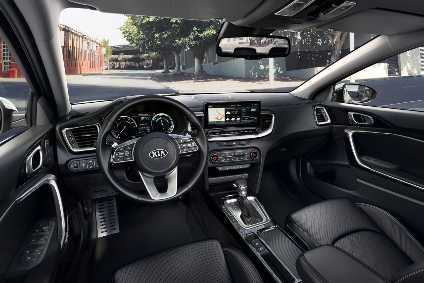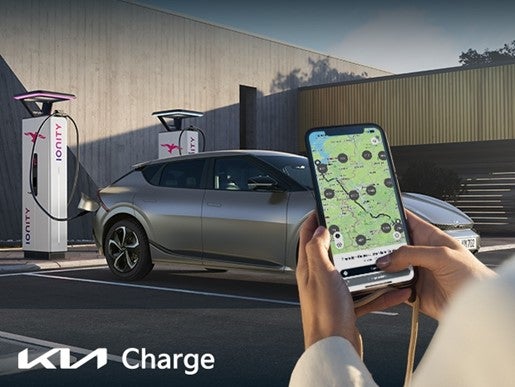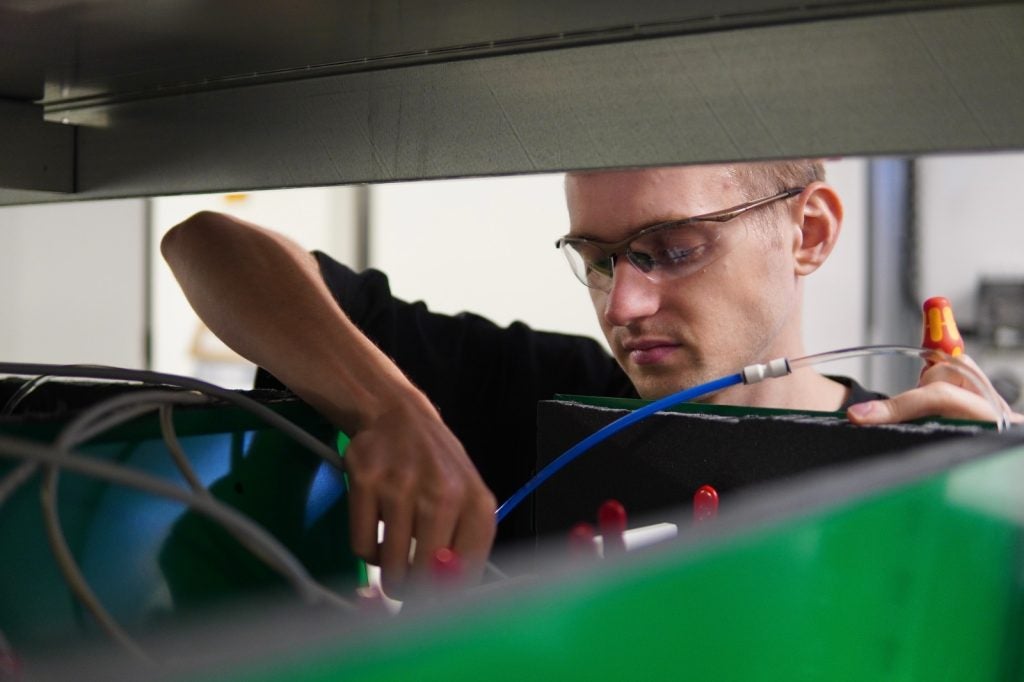
The fourth member of the Kia Ceed family is built at Kia's production facility in Žilina, Slovakia. Tailored to the tastes of European buyers and representing a sporty alternative to traditional SUVs, the XCeed was conceived at the brand's design centre in Frankfurt. It bridges the gap between the Ceed and Sportage. Continuing just-auto/AIC's review of interior design and technology trends, we take a closer look inside this offering for the crossover utility vehicle (CUV) segment that Kia has squeezed into.
The creation of the Kia XCeed has taken place under the direction of Gregory Guillaume, vice president of design for Kia Motors Europe. "When we came to designing the new Ceed range as a whole, we didn't have a brief to design a crossover," explained Guillaume. "But as we developed designs for other models in the range, we realised a bodystyle like this could capture the emotion and sportiness of the ProCeed, but offer something new at the same time. An urban crossover seemed to embody these values well."
The only body panels carried over from its five-door hatchback sibling are the front doors. In profile, the XCeed's relatively long bonnet flows into the A-pillars anchored aft of the front wheels, giving it a swept-back silhouette. The front and rear of the car also represent a departure from the 'face' of the conventional Ceed model family, differentiating the XCeed from its stablemates. Slightly wider than the Ceed, the CUV has a more prominent grille and larger lower air intake.
Proceeding to the interior
With a lower hip point than a taller SUV, and raised ground clearance over a conventional hatchback, the XCeed provides drivers with a slightly lofty driving position allowing a good view of the road ahead.
The dash itself is split into an upper area – for the 'floating' touchscreen infotainment system – and lower level, housing the nitty-gritty controls for audio and heating and ventilation. Driver-centric in its layout, the centre console is helpfully angled slightly towards the driver's seat. The interior has soft-touch materials hither and thither.
How well do you really know your competitors?
Access the most comprehensive Company Profiles on the market, powered by GlobalData. Save hours of research. Gain competitive edge.

Thank you!
Your download email will arrive shortly
Not ready to buy yet? Download a free sample
We are confident about the unique quality of our Company Profiles. However, we want you to make the most beneficial decision for your business, so we offer a free sample that you can download by submitting the below form
By GlobalDataSize-wise, with a total length of 4,395mm, the XCeed is 85mm longer than the Ceed five-door hatchback and 90mm more compact than the Sportage. Its roof height of 1,495mm also means it stands 48mm above the Ceed and 150mm below the Sportage, providing drivers with a lower centre of gravity than its taller sibling and an elevated driving position over the conventional Ceed. While front seat occupants have ample head, shoulder and leg room, tall adults seated in the back will find it a little cramped.
A 12-volt power socket and USB fast charger were found in the front centre console, the latter is illuminated to make it easier to use at night. Cupholders are located in the rear armrest and front centre console. Other creature comforts include ventilated front and heated rear seats on the 'First Edition', as well as dual-zone air-conditioning, heated electric folding door mirrors, heated leather steering wheel and heated front seats on all PHEV models.
In the luggage department, the hybrid hatchback has a boot capacity of 291 litres with the seats upright (due to the position of the battery) and 1,243 litres with the 60:40 split seats folded flat.
While forward visibility around relatively thin A-pillars is good, over-the-shoulder view out of the back is limited due to the sloping roofline, shallow rear window and chunky rear pillars. Rear parking sensors and a camera linked to the touchscreen, with dynamic guidelines do compensate here.
More driving, less fiddling
A 10.25-inch touchscreen infotainment system stands proud of the dashboard, while the lower portion of the instrument panel provides a set of touch-sensitive buttons, dials and switches to control audio volume, heating and ventilation. These controls enable the driver to make quick changes to the cabin environment without taking their eyes off the road for too long. We also found the XCeed's substantial and clearly displayed buttons lined up beneath the screen infinitely easier to use than some fiddly, hit and miss buttons found in other cockpits.
A particularly noteworthy feature is the 'Driver Only' HVAC system – activated with a new button on the dash – that instantly deactivates airflow to all cabin vents except those nearest the driver. This is designed to reduce the draw on battery energy from the ventilation system, while still keeping the driver at their preferred temperature. Unlike conventional ventilation systems, the system doesn't simply restrict airflow to certain vents, rerouting it elsewhere; instead, it switches off the fans themselves, reducing energy use at source. That's a neat idea.
The Kia XCeed is among the first vehicles in Europe to offer the brand's UVO Connect telematics system. It links drivers to the wider world by providing information via the touchscreen and on their smartphone. Featuring Kia Live services, the system uses its own eSIM chip to retrieve and update live data during a drive. This includes live traffic information, weather forecasts, points of interest, and details of potential on- and offstreet parking (including price, location and parking availability). The second element of the UVO Connect diagnostic data about owners' cars and the trips they take, enables drivers to send route directions to their car before a journey, and enables them to check the location of their vehicle at any time.
The touchscreen's split-screen functionality lets users control or monitor a number of vehicle features at the same time. For instance, this means the driver can follow navigation directions while passengers choose their favourite songs or check the weather forecast.
While some competitors offer the opportunity to personalise the digital instrument cluster, is that possible on the XCeed? A spokesperson for Kia said: "The XCeed debuts our digital instrument cluster technology and this is the first incarnation of the cutting-edge display. We plan to add extra features and functionality in the future as we develop the technology for future vehicles, however, the display in the XCeed is not customisable."
Advanced driver assistance systems
The variant we took out last week was a '3' that bristled with active driver assistance system (ADAS) technologies, including lane keep assist, high-beam assist, hill start assist control, speed limit information function and the forward collision avoidance assist system, able to detect pedestrians. Driver attention warning advises drivers to take a break if the system detects signs of fatigue.
'First Edition' models go one step further with the integration of smart cruise control with stop and go functionality, blind spot collision warning, intelligent speed limit information function and forward collision-avoidance assist with cyclist detection. Lane following assist is also included, which controls acceleration, braking and steering. The system can track vehicles and road markings ahead to keep the car in-lane and a safe distance from any cars in front.
On the road
Our press tester 1.6 GDi PHEV paired with a six-speed automatic gearbox returned 62 mpg. It also has noticeably good suspension; a 100-yard stretch of country road near me, littered with bumps and potholes similar to that found in a proving ground, is the perfect spot for a road test. While it isn't particularly engaging or quick off the mark compared to its siblings, causing extra calculation during over-taking manoeuvres, it still manages to deliver power smoothly. On balance, the XCeed is a good-looking car that is soothing, rather than exciting, to drive. A comfortable and spacious place to sit on long journeys, its well-equipped cockpit incorporates everything where you expect to find it. Its rivals include the VW T-Cross, Vauxhall Crossland X and Skoda Karoq.





